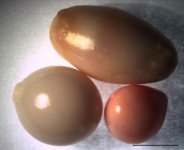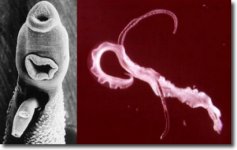hacostas
New Member
Around the time when I joined the forum [years! Ha! when did it pass?...] I had found a report of successful conch pearl culture at some aquaculture research facility in Indonesia. The exercise had no commercial following reported. Any idea if things went any further? [I am trying to find out the reference - it is 'hiding' right now]
this is the thread https://www.pearl-guide.com/forum/natural-pearls/1887-cultured-conch-melo.html
I also read the reports. It was for Melo melo cultured pearls in Thailand. I do not know anything else about this. However, probably just like we did, they may have been keeping things in the dark (since the Thai newsletter is now nowhere to be found).
When we started with the queen conch pearls project we published the conch relaxation technique since it was very simple and had been done with other species. However, after the first pearl came up, that was it. no telling to anybody.
I'd be very interested to know what happened to this Thai operation.
Last edited:




